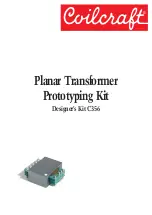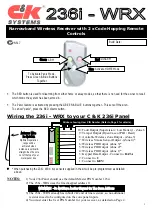
FDDI Media
11-2
Cabling Types
In any transceiver or Network Interface Card (NIC), the network protocol signals
to be transmitted are in the form of changes of electrical state. The means by
which the ones and zeroes of network communications are turned into these
signals is called encoding. In a twisted pair environment, once a transceiver has
been given an encoded signal to transmit, it will copy the signal and invert the
polarity of that signal (see Figure 11-2, below). The result of this inverted signal is
a mirror opposite of the original signal.
Both the original and the inverted signal are then transmitted, the original signal
over the one transmit wire, the inverted signal over the other. As these wires are
the same length, the signal travels at the same rate (propagates) through the cable.
Since the pairs are twisted together, any outside electrical interference that affects
one member of the pair with have the same effect on the other member of that
pair.
The transmission travels through the cable, eventually reaching a destination
transceiver. At this location, both signals are read in. The original signal is
unchanged, but the signal that had previously been inverted is reverted to the
original state. When this is done, it returns the encoded transmission to its
original state, but reverses the polarity of any signal interference that the encoded
transmission may have suffered.
Once the inverted transmission has been returned to the normal encoded state,
the transceiver adds the two signals together. As the encoded transmissions are
now identical, there is no change to the data content. Line noise spikes, however,
are combined with noise spikes of their exact opposite polarity, causing them to
cancel one another out.
Figure 11-2. UTP Signal Equalization
Inverted
Transmission
Normal
Transmission
Induced
Noise Spike
Noise spikes
cancel out
Resulting Signal
Reversion of Inverted
Transmission
Original Signal
1845n05
Summary of Contents for 100BASE-FX
Page 1: ...Cabletron Systems Cabling Guide...
Page 2: ......
Page 4: ...Notice ii...
Page 22: ...Cabling Terms 2 8 Test Characteristics...
Page 54: ...Ethernet Media 4 30 Connector Types...
Page 72: ...Full Duplex Ethernet Network Requirements 6 8 Ethernet FOIRL Single Mode...
Page 80: ...Fast Ethernet Network Requirements 7 8 Hybrid Installations...
Page 130: ...FDDI Media 11 16 Connector Types...
Page 136: ...FDDI Network Requirements 12 6 TP PMD STP...
Page 170: ...Connecting and Terminating 14 20 FDDI...
Page 192: ...Index 4...
















































